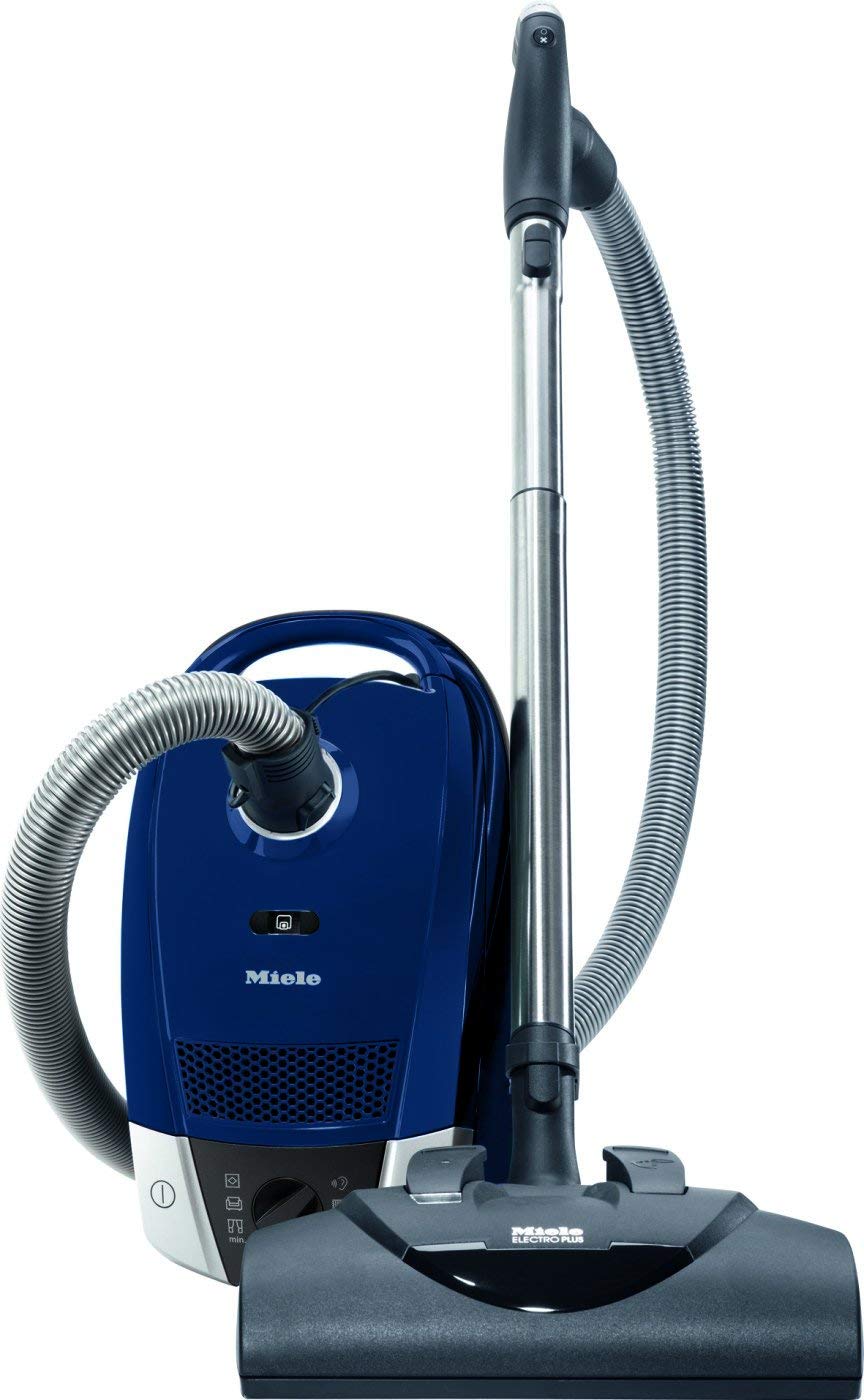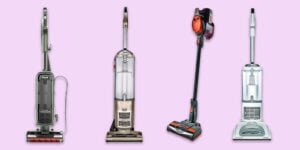Upright Vacuum or Canister Vacuum: Which is Best?
There’s no denying that upright vacuum cleaners are the clear winner in the popularity stakes in the USA, especially with the latest eye-catching designs, but are they any better than their canister vacuum rivals? In order to get to the heart of the matter, we wanted to look at the difference between the two, focusing on cost, performance and ease of use. Does a Canister vacuum clean larger surfaces more efficiently, or can an Upright clean the stairs with ease?
We think that the answer in most cases often comes down to budget. The most expensive upright would be far better than a budget canister, and the same applies the other way around. It also depends on flooring. In the past, rugs and carpets were common place, but the variety today in American homes in terms of flooring are enormous: hardwood, bamboo, laminate, carpet, rugs, hardwood with a carpet inlay, vinyl, tile, marble and so on. As a result, the modern vacuum needs to be versatile while also being powerful and multi-functional.
To help our readers navigate the complexity of the vacuum market, this article offers an overview of the merits of both upright and canister vacuums so that you can make an informed decision as to which best suits your needs.
Advantages of an Upright Vacuum Cleaner

Cost
Upright vacuum cleaners are, on average, cheaper than canister vacuums. Some uprights can be as expensive as canister vacuums if you go for the top of the line models, but mostly they are less than $100. Because of the lower cost, uprights tend to be more popular with people who own apartments and smaller, more manageable homes. Upright vacuum cleaners can be a bit noisier than the canister variety because of their slimmer design leaving less room for sound insulation. But if you’re saving hundreds of dollars, other than the neighbors, who’s complaining?
Performance
Most new uprights come with motorized brushes, so they can be great when tackling thicker pile carpet or rugs. The brush is also great when dealing with pet hair, which can cause allergic reactions if left embedded in the carpet. Uprights also handle multi-surfaces easily too, coping with the sudden change from carpet to hard flooring without fuss. Most have a control switch that is foot operated to raise or lower the vacuums height so that they can deal with different surfaces without too much bother, but some of the more expensive models have an auto intelligent function, with the vacuum reading the flooring type and adjusting the height accordingly.
Surprisingly, even the cheapest end of the upright market comes with an array of tools including turbo brush rolls, hoses, upholstery attachments, and even pet claws for the stubborn hairs that other vacuums leave behind. Uprights also have a more extensive cleaning path. An average upright should have a cleaning path of between 12 to 14 inches, typically. Compare that to a canister, and you’ll find the cleaning path to be around 10 inches. Over the same floor space, it would take less time to clean with the upright.
Ease of Use
For those plagued with back problems, an upright would be a good choice. The design of an upright means that there won’t be any bending down (unless you’re using the hose). It beats all that stooping when operating a canister vacuum. The actual motion of an upright is so simple: push and pull across the floor, and the job gets done. There’ll be no dragging a canister around attached to a long hose.
Some uprights have “swivel steering,” which means they can turn on a dime and are a dream at maneuvering around furniture. There are even models of vacuum that can lay flat so that you can capture dirt and debris deep under furniture. In addition, uprights generally have a hose attachment with a detachable nozzle, called a “wand,” that focuses the suction power into smaller areas. Even on the most basic models, the hoses are around 10 to 20 feet in length, so hard-to-reach places will be consigned to history. Finally, upright vacuums are also easier to store. Due to their sleek design, most will store easily and take up far less space than a canister.
Disadvantages of an Upright Vacuum Cleaner

Weight
Some uprights can weigh as much as 20 pounds. If vacuuming is your daily workout, then great, build those muscles, but for the rest of us, we think the lighter the vacuum the better, particularly if you need to navigate the stairs.
Noise
We touched on this in the previous section: there’s no escaping the fact that most uprights are noisier than canister vacuums. Canister vacuums are fatter, with more sound insulation to dampen the noise. Uprights, however, are slim and designed with storage and maneuverability in mind. Canisters don’t have these restraints on their design.
Not all uprights are noisy, though: Miele has a model that produces 70 db. We think that’s pretty impressive, especially when you look at some of the other models registering at 80/90 db.
Maneuverability
Unless you have the “Ball” or “Swivel” model of upright, at some stage you are going to curse the lack of maneuverability that your upright has. Having a more extensive cleaning path is a dream on open, clutter-free spaces, but when it comes to furniture, it can be a nightmare. Sure, you’ll work out all sorts of clever tricks to squeeze that vacuum under the table without pulling out the chairs, but it will get stuck eventually.
Best Upright Vacuum
Shark Navigator Lift-Away NV360

Best Canister Vacuum
Miele Compact C2 Electro+ SDCE0

Advantages of a Canister Vacuum Cleaner

Performance
The canister vacuum will tackle even the biggest household mess with ease. Muddy dog prints will be gone in seconds; the kids’ messy soccer boots won’t leave a mark on the carpet; and because the canister has a long cord and a long hose, the stairs will be cleaned in a flash. It’ll even manage the multi-surfaces that you have at home because the hose is light and easy to use.
Canister vacuums don’t typically have brush roll technology, unlike the uprights we have reviewed, but they do have greater power, with bigger motors, adding up to greater suction. That said, some canister vacuums are equipped with a mechanized brush to handle stubborn pet hair. Canister vacuums also typically come with an array of tools, like a crevice nozzle, upholstery brush, and wand to tackle all situations. Furthermore, the wider body of the canister vacuum means that the tools can usually be stored away in a hidden compartment. There’s also the question of noise. Canisters are quiet. Whilst an upright typically generates around 80 db, canister vacuums can be as low as 70 db, and some of the latest models are as low as 61 db.
Ease of Use
With a long hose and a lightweight body, canister vacuums are surprisingly easy to use. They are great on upholstery, fabrics, and drapes, and stairs are no longer a daunting task. The body of a canister vacuum is smaller and more rounded, so lifting it up the stairs to reach the top step isn’t a problem. Couple that with the light hose, and there’ll be no struggles at all. Weaving in and out of furniture is simple too. The hose goes where you point it without any fuss. Canister vacuums can handle most flooring types and because of the greater suction power, there’s no loss of performance.
Disadvantages of a Canister Vacuum Cleaner

Cost
Canister vacuum cleaners are generally more expensive to buy, a boost that usually comes down to overall performance, lower noise levels, and increased power of suction. Canisters are the most powerful of the vacuum cleaners, so if you have a larger floor space and want a vacuum that will tackle the job with ease, a canister vacuum is the way to go.
Storage
Canister vacuums are lighter and smaller than uprights, so you’d think they would be easy to store. Because of their design, however, canisters don’t store that easily. The hose can be awkward, and the round body doesn’t sit in a cupboard well. Every time you open the door, we guarantee that the hose will fall out and hit you on the head.
Maneuverability
One of the biggest complaints about canister vacuums is that they just don’t go where you want them to go. Previously, we’ve said that they are easy to use because the hose is the bit that you poke into tight spots, but the act of dragging the canister can be a little frustrating especially if you have one with wheels that has a mind of their own. Often, you’ll find the canister flipped because it couldn’t roll over a small step or wedged around a door jam. in addition, If the canisters wheels are too small, deep-pile carpets can be a problem because they refuse to roll.
The other thing to consider when operating a canister vacuum is the impact it could have on your back. With a canister, typically the controls are on the unit, so that means bending to operate the machine. Quite often, power adjustments will be on the actual unit as well. Newer canisters often come with controls fitted to the end of the hose that you hold, but there will still be more bending down required than if you were using an upright.
Final Thoughts
There is no clear winner here. As we said from the start, it all depends on the budget. There are good and bad vacuums in both categories. But it is worth adding to the original question. We wanted to know which was best, well the question should be: Which is best for you. In the end, your home life will determine the sort of vacuum that’s right for you, so we want the decision to be yours and to be an informed one.




